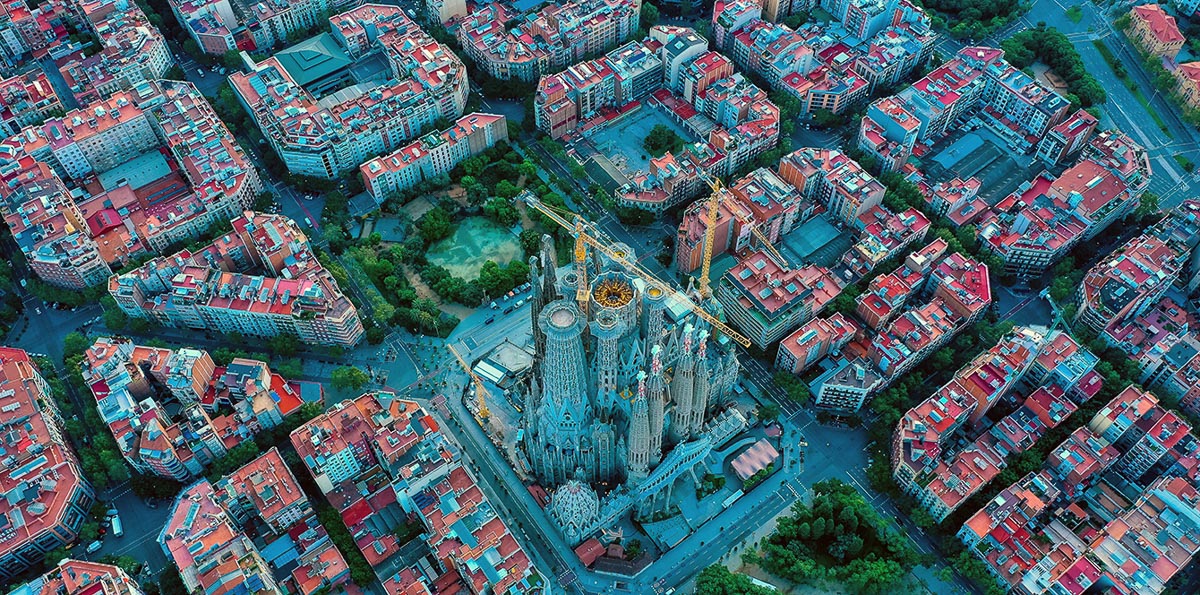Every minute of every day, every single person is immersed in what we typically call “place”.
We are always situated in a particular location — our home, our car, our workplace, the places we typically shop, our church or other place of worship — and most often these are the same locations from one day to the next. At least during non-COVID times, we’re constantly traveling from one place to another — from the bedroom to the kitchen, from the house to the garage, from home to work, from one store to another, from our front door to a nearby park or restaurant. As we travel, our physical environment is constantly changing. We are indoors, we are outdoors, or we are somewhere in between. We travel on foot, on a bus or train, in a car or truck. The world gets warmer or cooler, lighter or darker. We are surrounded by tall buildings or parking lots or open fields or some combination of all three.
In other words, “place” is one of the most common and ubiquitous of all human experiences. Yet most of us never think about it.
Instead, we just drift from place to place every day without consciously processing the experience. And the world of GPS has made us less sensitive to place. It used to be that in order to navigate the world, you had to orient yourself within it. Now all you do is follow the GPS — turn left, turn right, the destination is on your right. You don’t have to understand the places you are traveling through in order to successfully navigate through them.
But some people are conscious about their place experience. They define their world by place. They process the place they are moving through and its components constantly. They tend to think in geographical terms — they remember who people are by remembering where they live and where they grew up. Many of these people call themselves “urbanists” because they like to live in and experience cities; often they work as architects, landscape architects, urban designers, or urban planners, as I do. But many are naturalists, who focus on forests, fields, mountains, and other “natural” environments; they often work as natural scientists or land conservationists.
What these people have in common is what I call the “place gene”. It’s the seemingly natural ability to relate to your place experiences and shape your understanding of life around those places. It’s common for these folks — myself included — to think that you’re either born with the place gene or you’re not. We’re sometimes a little smug about it. We think that people with the place gene appreciate and know how to create great places, while everybody else just drives cluelessly around in placeless suburbia.
But maybe we’re all born with the place gene. And maybe we can all develop our sensitivity to place in way that helps us navigate the world and makes us more comfortable in it, no matter what our personal place preference is.
After all, psychologists tell us that we all have the potential to form a deep attachment to place — especially places that we associate with intense personal experiences. But how can we take that natural inclination toward place attachment and use it to develop a place consciousness that can help us feel more comfortable with the world around us?
A few paragraphs down, I’ll suggest some ways that you can stretch yourself to try to experience different places in a new way. And I’d love to hear about what that experience taught you about place sensitivity. But first, a little bit more about the process by which we attach ourselves to place.
Most people feel an extremely strong place attachment to house they grew up in, especially if — as was the case with me — they lived in the same house for their entire childhood. Some feel a strong place attachment to the neighborhood they grew up in. As I have written elsewhere, early on I developed a strong place attachment to my entire hometown — and this led to a place sensitivity that has defined both my adult life and my career as an urban planner and a politician.
But forming a deep attachment to a particular place is one thing. Using predisposition for place-attachment to constructively interact with the entire world is something entirely different. And maybe that’s what I mean when I say some people have the place gene.
In my experience as an urban planner, I have often found that for longtime residents of a particular community or neighborhood, the place status quo is an extremely important source of comfort — so important that any potential change to the physical composition of the neighborhood is a source of fear and anxiety. That’s one of the reasons why NIMBYs (“Not In My Back Yard”) fight so hard against new real estate development projects in their neighborhood.
To me, one of the most fascinating aspects of the NIMBY phenomenon is that attachment to the physical experience of place often overrides attachment to people. Longtime residents will say nothing when their neighborhood begins to change demographically — especially if it goes upscale. (Of course, if they are homeowners, they benefit financially from this evolution.) But when faced with a change to the physical environment — McMansions, or other large new developments — they freak out. In my career I have encountered countless older homeowners who suffer from anxiety because their neighborhood has a different physical form, or more traffic, than it did forty or fifty years ago. Rationally, you can’t expect things to stay the same over such a long period of time. But for longtime homeowners, the physical characteristics that have comforted them for years or decades become vastly more important over time.

A typical American strip mall — utilitarian but “placeless.”
This creates a huge gap between residents of a community and the urban designers and planners — like me — who are supposed to be helping them as their community changes over time. We usually talk past each other. Urban planners and designers often serve as the facilitators of physical change — and sometimes we turn into advocates for a denser urban form, which puts us at odds with longtime residents who have developed a deep attachment to their neighborhood as it currently exists. I have seen — even in my own former neighborhood of Midtown in Ventura, California — ferocious battles over whether buildings should be two stories high or three, as if two stories is perfectly fine but three would ruin people’s lives.
The lesson from all this for me is that as urban planners and urban designers we don’t do ourselves any favors by being intolerant of other points of views. (Naturalists can be equally intolerant about converting natural landscapes into suburbs designed for human use.) Maybe we should stop proselytizing about a particular urban form because we think we have a monopoly on the place gene. Instead, perhaps we should encourage people to use their place gene more consciously and more actively, even if in the end they use their place consciousness to disagree with us.
What this means to me is encouraging people to move past attachment to an individual place toward an understanding of the qualities that make many places valuable, even if they are different from the places you are comfortable with. You may still prefer a low-density suburb — which neither urbanists nor naturalists really like — but at least it will be a conscious decision based on a true understanding of how places work.
Most people who travel widely actually develop their place gene in this way. Even if they live in a typical American suburb, they appreciate the intense energy of a really dense city like New York or the walkable elegance of a mid-rise city like Paris or Barcelona.
But most people cannot travel widely. And during the COVID crisis, nobody can travel widely. So, under these circumstances, how can you develop your place gene? And, just as important, how can we urbanists and naturalists change our attitude to help people develop their place gene rather than dismissing those who seem to have no place consciousness?
By tethering us to our neighborhoods more than usual, the COVID crisis gives us a great opportunity. Our “coronavirus walks” can be used to think about the world around us and how we experience it.
So, try taking the following steps to see if you can hone your place gene — and, along the way, begin to understand why other people might experience the same place differently than you:
1. Think about your coronavirus walks in your own neighborhood. Why do you like it? What specific physical characteristics about it bring you comfort?
2. Pay attention to your surroundings when you walk or drive. Don’t just follow the GPS but try to put the pieces together. What do you notice, good or bad, that you didn’t see before as you drive around? What stores do you see — and in what sequence? What different types of buildings or houses do you see? Which ones do you like and which won’t don’t you like? Why? And what does this urban fabric tell you about the neighborhood you are experiencing?
3. Take a coronavirus walk around a neighborhood different from yours — ones that make you slightly uncomfortable. What makes you uncomfortable? Again, what specific physical characteristics make you uncomfortable? What would have to change to make you feel more comfortable — not only in the physical environment but in your own attitude toward the place?
4. Find a physical environment different from your own neighborhood that you do like, and explain why you like it. This doesn’t have to be another residential neighborhood. It could be a business district, a park, or even a natural setting.
5. Have a conversation with somebody who disagrees with you about the type of places you each find comfortable. And stop talking past each other. If you prefer the status quo, don’t be defensive. If you are a planning or design professional who facilitates change, don’t proselytize. In other words, really listen to each other.
Whichever side of the place divide you’re on, I’d love to hear from you about how you experience place. What is it about place that matters to you? What makes you comfortable or uncomfortable, why? If you follow any or all of the five steps above, let me know what your experience was like. Did your perception of different places change as a result?
Just contact me at bfulton@rice.edu or @billfultonvta. I’ll report back on what people tell me about this whole experience.
Whether we realize it or not, place is a defining aspect of everybody’s life. And the “place gene” isn’t innate — it’s developed. By experiencing place consciously and intentionally, we can enhance our whole life experience and find new ways to connect with other people — especially people different from ourselves.
This essay originally was published on Medium.

